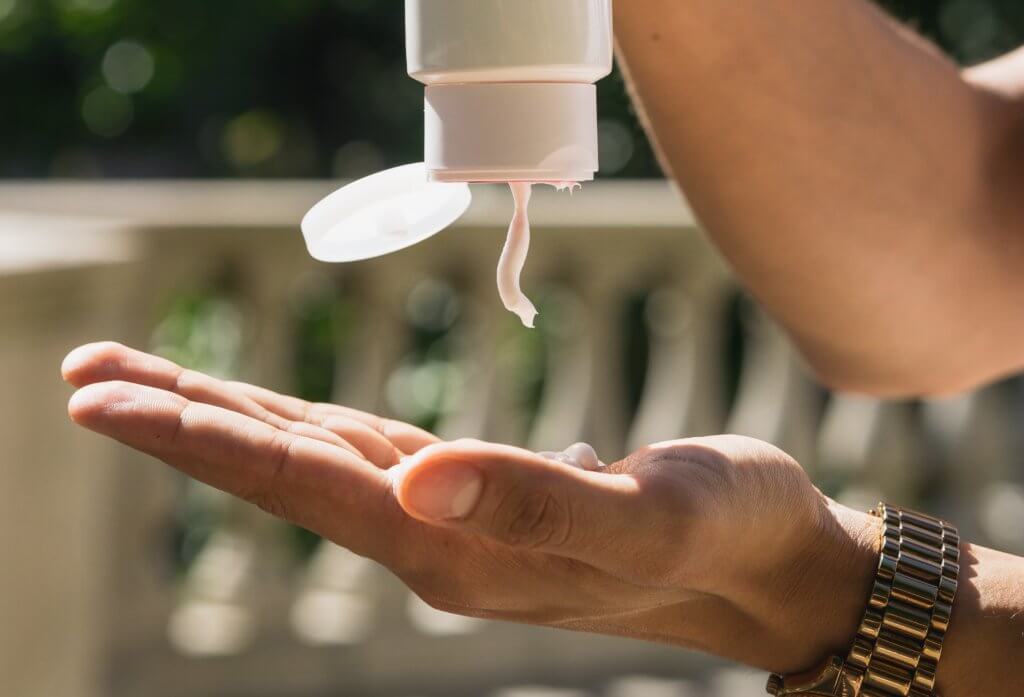Soaking in the sun’s rays not only lifts the spirit, lightens the mood, and gives your body a good dose of vitamin D, but it can also have damaging effects on the skin. Wearing sunscreen helps protect your skin from damaging UV rays and can ultimately help prevent skin cancer.
The American Academy of Dermatology estimates that 1 in 5 Americans will develop skin cancer in their lifetime. But there are ways to prevent skin cancer and protect yourself from wrinkles and lines. The sun can damage skin any time of year – not just in the summer. It’s important to wear sunscreen even if it is cloudy outside.
What is Skin Cancer?
Skin cancer is an abnormal growth of skin cells that can affect people of all colors and races. However, it is more likely to occur in those with fair skin.
The two most common types of skin cancer are squamous cell carcinoma and basal cell carcinoma. These cancers are highly curable if detected early. If left untreated these cancers can cause serious damage and disfigurement.
Melanoma is another type of skin cancer. Melanomas generally develop as a new dark spot or in a mole.
The majority of skin cancers develop due to overexposure to ultraviolet (UV) light. UV light is a type of radiation produced by the sun, tanning beds, and sunlamps. It is invisible to the human eye, but can penetrate and damage skin cells. Minimizing sun exposure to harmful UV rays is key in skin cancer prevention.
How to Protect Your Skin from the Sun
The American Academy of Dermatology recommends when choosing a sunscreen to choose one that is water resistant, broad spectrum, and is SPF 30 or higher. The AAD recommends taking the following steps to protect your skin:
- Apply a water-resistant, broad-spectrum sunscreen with an SPF of 30 or higher. Broad-spectrum sunscreen provides protection from UVA and UVB rays
- Use sunscreen whenever you are going to be outside, even if it is cloudy
- Apply enough sunscreen to cover all skin that is not covered by clothing. This includes applying sunscreen to your neck, ears, the top of your head, and to the tops of your hands and feet
- Sunscreen should be reapplied every two hours when you are outdoors, after swimming, or if you are sweating
- Water, snow, and sand reflect the rays of the sun, which can increase your chance of sunburn. This means sunscreen should be applied throughout the year – not only in the summertime
- Try to stay out of direct sunlight by seeking shade when possible, especially when the sun’s rays are strongest between 10 am and 2 pm. A good rule of thumb for when to seek shade is if your shadow is shorter than you are
- Protect your skin by wearing protective clothing like a long-sleeved shirt, pants, a wide-brimmed hat, and sunglasses. Clothing made out of tightly woven fabric like wool, denim, and canvas can offer extra protection from the sun’s rays
Applying sunscreen once is helpful, but it will not guarantee extended protection. Most water-resistant sunscreens last about 60 minutes. If you have plan to be exposed to the sun for more than an hour, it is recommended to reapply sunscreen every 60 minutes.
What Should I Do if I Get a Sunburn?
According to the Skin Cancer Foundation, a sunburn is “an inflammatory reaction to ultraviolet radiation damage to the skin’s outermost layers.” The skin can appear red and may even blister if you are experiencing a sunburn. The Skin Cancer Foundation suggests doing the following if you have a sunburn:
- Cool the burn by using a cold compress or by taking a cool shower or bath
- Moisturize the burned area while the skin is damp. Try to keep the skin moist over the next few days and avoid using petroleum or oil-based ointments
- Decrease the inflammation by using a nonsteroidal anti-inflammatory drug. Cortisone cream may be used for a few days to reduce redness and swelling. Aloe vera can also soothe burns
- Hydrate with water and sports drinks as your skin heals. Burns can draw fluid from the rest of the body, so it’s important to rehydrate
Repeated sunburns raise your risk of developing skin cancer, so it is important to use sun protection to limit your risk factors.
Early Detection of Skin Cancer is Key
Early detection is the best way to beat skin cancer should it develop. The most common symptom is an unusual change in the skin — a new growth, a mole that is different than before, or a sore that doesn’t heal. Detecting the changes in a mole or spot is as easy as remembering your ABCs:
- Asymmetry – Is it an odd shape that has two very different parts?
- Border – Is the edge of the mole of spot irregular or jagged?
- Color – Is the color uneven?
- Diameter – Is it larger than a pea?
- Evolution – Has the mole or spot changed in the last few weeks or months?
Any of these signs should be brought to the attention of a medical provider.
Get the Care You Need
Performing regular skin self exams and wearing sunscreen if you are going to be outside are key steps in detecting and preventing skin cancer. If you notice new or suspicious spots on your skin, or anything changing, itching or bleeding, please see a medical provider.
Advanced Urgent Care & Occupational Medicine’s providers are ready to help answer any questions you have and help treat sunburns. With locations across Colorado’s Denver metro area, it’s easy to get the care that you need when you need it. Our providers can evaluate your symptoms and point you In the right direction for the treatment you need.

